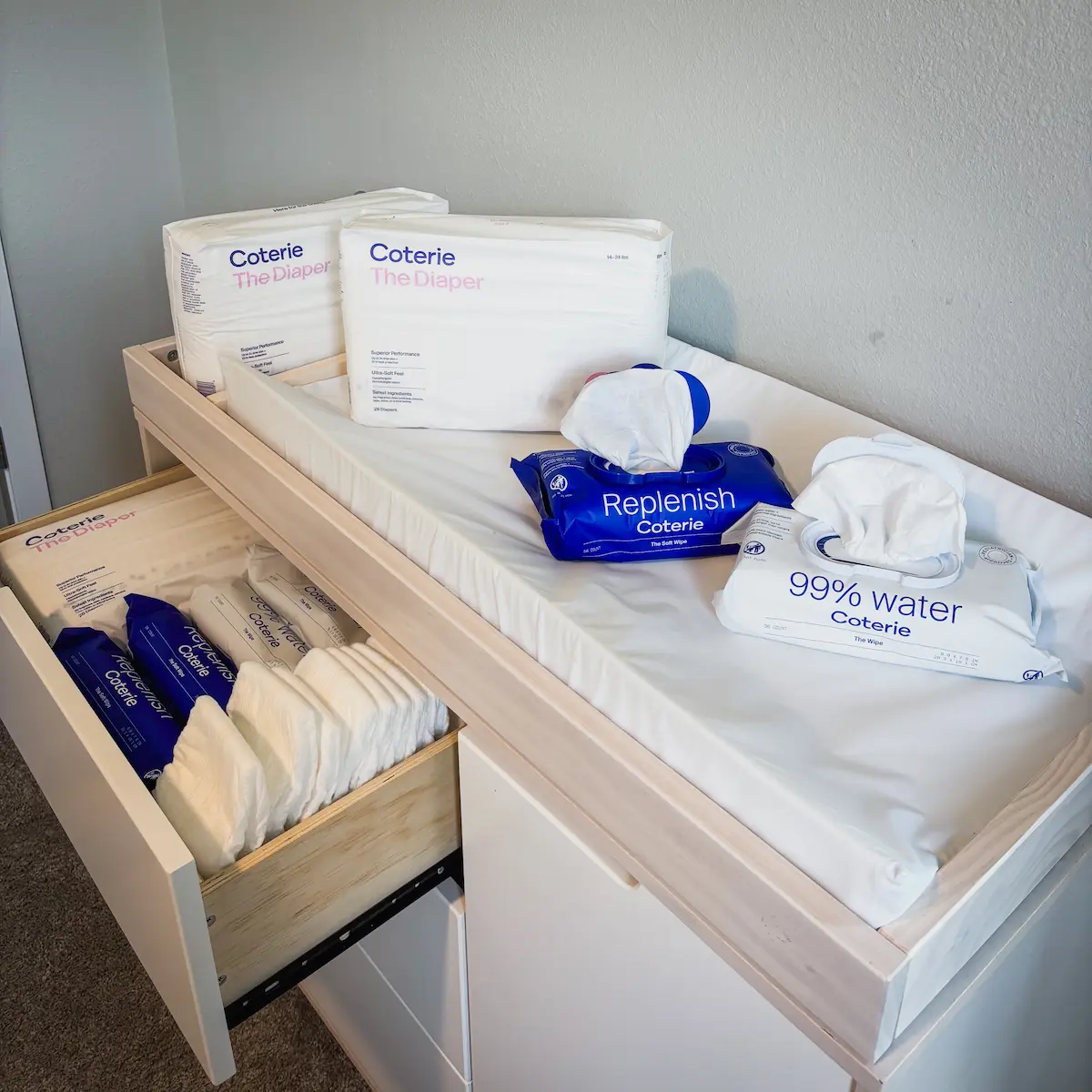In this review
In this review
Baby diapers and wipes face minimal federal oversight, meaning brands aren’t required to disclose materials or chemical testing. To find out which chemicals and allergens infants may be exposed to, Coterie released a detailed Safety Report summarizing third-party lab screenings, OEKO-TEX certifications, and dermatological patch tests on their diapers. The report outlines which chemical groups were evaluated - including PFAS, VOCs, phthalates, parabens, heavy metals, and allergenic dyes - and whether any were detected above lab limits.
Key Findings
- Diapers and wipes on the market often contain chemicals parents never see on labels.
- Coterie reports screening for 1,000+ compounds, with none found above reporting thresholds on its diapers.
- Dermatological HRIPT testing showed no irritation or sensitization, suggesting low skin-reaction risk.
- Wipes were verified as 99% water with plant-based fibers and no plastics.
- Third-party bodies (OEKO-TEX®, EDANA) confirmed materials met their highest infant-safety standards.
Why It Matters
Infants wear diapers constantly, across highly absorbent skin - yet the category has some of the loosest safety disclosure rules in consumer products. Low-dose exposures to irritants can still contribute to rashes or sensitivity, and parents often lack clear information about what’s in everyday baby items. Reports like this help fill a gap where regulation hasn’t kept up.
Takeaways
• Prioritize products with independent testing, not vague claims.
• Choose wipes with full material transparency, especially if avoiding plastic.
• Remember diaper brands vary widely in chemical screening - not all are tested the same.
• Keep monitoring your baby’s skin; even well-tested products can affect children differently.
Read the Research: Coterie. Product Safety Reports: Diapers, Wipes & Skincare. Published 2024.https://www.coterie.com/safety-reports


.png)






